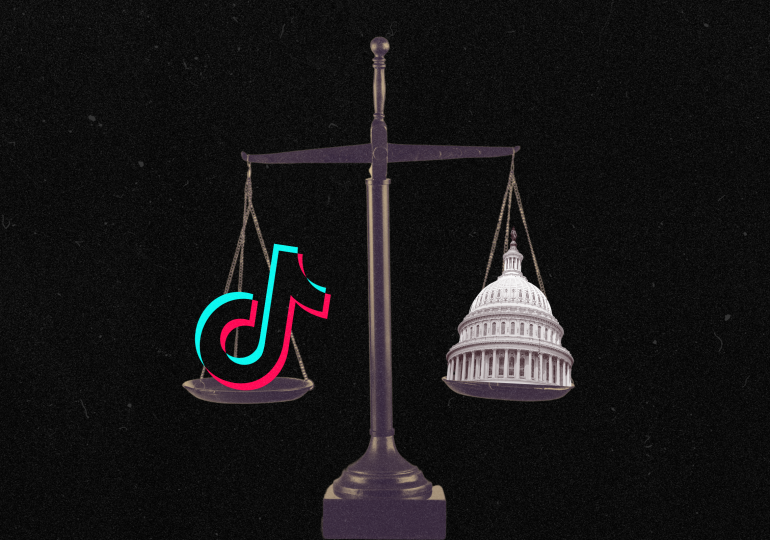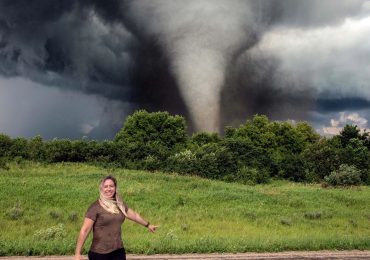On Wednesday, President Joe Biden signed a bill that would force TikTok’s parent company, ByteDance, to sell the app to a buyer in the United States within nine months or face a nationwide ban. The ban, passed by the House of Representatives on March 13 and the Senate on Wednesday, was folded into a bill that would provide billions of dollars in aid to Ukraine, Israel, and Taiwan.
“The path to my desk was a difficult path. It should have been easier, and it should’ve gotten there sooner,” Biden said after signing the bill. “But in the end, we did what America always does; we rose to the moment.”
[time-brightcove not-tgx=”true”]
In response, ByteDance uploaded a message to Toutiao, a Chinese social media platform, saying the company “has no plans to sell,” and TikTok released a statement on X. “This unconstitutional law is a TikTok ban, and we will challenge it in court,” the statement reads. “We believe the facts and the law are clearly on our side, and we will ultimately prevail.” The statement noted that the ban would “devastate seven million businesses and silence 170 million Americans.”
Since TikTok became popular in the US in 2020, it’s become a platform where all kinds of creators can quickly build a following and sustain businesses through the app’s revenue-sharing programs, by earning money on live streams, and by taking on brand deals, paid partnerships, and promotions. Outside of creating a space for a nontraditional career path—according to a 2023 Morning Consult report, 57% of Gen Z would be content creators if given the opportunity—TikTok is and always will be a place where people can build a community. If the app is banned in the U.S., TikTok creators say they are worried about losing more than an income stream. The app has been a crucial resource for people to convene to share information, educate others on a wide array of topics, develop their business and brand identity, and fundraise and organize like-minded individuals around different humanitarian issues.
While TikTok’s path remains unclear, creators on the app are either laughing their way through a potential ban or trying not to get too anxious about something out of their control. TIME spoke with a few TikTokers, who have used their platforms in a range of ways, to discuss what they are worried about losing and how they plan to move forward.
Small businesses will feel the effects of a TikTok ban
TikTok has been integral to the reach of many small businesses in the U.S. According to a March 2024 Oxford Economics report, which surveyed 1,050 small business owners and 7,500 TikTok users to learn how they “interact with the app and leverage the economic and social opportunities it provides,” over seven million businesses use TikTok to promote their products. More than half the respondents to the study said TikTok has helped them reach a new audience that they wouldn’t have otherwise been able to tap into, while 45% of those surveyed said a “meaningful portion of their business’ success and/or growth is directly attributable to their TikTok marketing efforts.”
Nadya Okamoto, a TikTok creator with over four million followers and the co-founder of the lifestyle period care brand August, says that TikTok was able to help her business “unlock so much growth.” This is because ads on platforms like Instagram and Facebook are oversaturated and expensive to place, whereas TikTok allowed her company to promote its products organically. “Platforms like TikTok that are very focused on organic brand awareness allow overnight virality and kind of give anybody a chance to build a following to help small businesses,” she says. “TikTok has been especially important when it comes to community building. I’ve found so much community with like other Asian creators, other queer creators, other female founders, and I think it’s because people can do a bit more about storytelling through short video.”
TikTok is an integral space for marginalized communities to organize
TikTok has over 170 million users in the U.S., and the platform allows for the quick formation of community. “With TikTok, you can start something almost immediately and have support. I think that frightens a lot of our political class because we’re using it to advocate for ourselves against them,” says Imani Barbarin, a disability rights activist with over 696,000 followers on TikTok. “Without TikTok, that community building, that advocacy work would be lost.”
Because of TikTok’s ability to make even the most innocuous videos go viral, the app has become a place where different perspectives and lives can be shared, allowing users to interact with people they might not otherwise encounter. For Barbarin and her community of young activists, TikTok provides an online space in a physical world where it feels like “everybody’s forgotten about us.” Younger disability advocates on the platform are growing up and sharing their experiences in real-time.
“We’re learning more about one another and how to navigate systems that are built without us in mind or, at the very least, to isolate us from society,” Barbarin says. “The reality is that the more we see each other, the more we connect with one another, the more we start to work together to create a future that we all can live in sustainably. That frightens a lot of people in power because they make money off of our desperation and disconnectivity with one another.”
TikTok also provides several avenues for raising and earning money. In November 2023, 28-year-old AR creator Jourdan Johnson raised $14,000 in 10 days with her viral “Filter For Good,” an effect that had creators trace a watermelon across a squiggly line, collecting seeds.
The filter generated money through qualified views via TikTok’s Effect Creator Rewards program. It could only be used once a day, and it started generating money after it had been used over 200,000 times. The effect gained almost instant popularity, and Johnson quickly reached the maximum amount of money the filter could generate through the program in less than two weeks. Johnson, who donated to Doctors Without Borders and bought eSIMs to aid the people of Gaza, says it was a small way she could use her skills to offer help. “We’ve seen how people can organize for different causes and issues that they’re passionate about and believe in,” she says. “It just so happens that the issue now is about the actual platform we’re on.”
Grassroots organizers have found success on TikTok, too, forming a new generation of activists. Gen Z for Change, which has been on the app since Oct. 2020, organizes young voters and focuses on issues ranging from climate justice, gun safety, worker and economic rights, and rights for marginalized communities. The group’s TikTok following has grown to over 1.8 million since launching in 2020, as they continue to educate followers on political issues concerning Gen Z.
“The Gen Z for Change audience has evolved with the page itself,” says Anthony Guevara, who is the head of engagement and Gen-Z Por El Cambio Coordinator. The latter is an initiative aimed at Latino Gen Z and provides resources like combatting misinformation and educating young Latinos on things like early voting and higher education. “People who have been following the page since 2020 have seen the progress the page has made and still has to do.”
He says this sort of growth would not really happen on a platform like X or Instagram because multiple polls have shown that Gen Z uses TikTok as their main source for news.
However, the Gen Z for Change team still relies on other social platforms like Instagram to get the word out about different initiatives. The coalition recently launched a tool that sends daily emails to representatives using Apple Shortcuts, calling for a ceasefire in Gaza. After downloading the tool on Shortcuts, users are prompted to enter their congressional district, and it automatically sends daily emails to representatives who have not signed the ceasefire resolution in the House of Representatives. The tool has been used about 10 million times—meaning between 25 and 30 million emails have been sent to representatives, according to Sofia Ongele, the director of strategy at Gen Z for Change.
But without TikTok, they stand to lose a digital space for community and connecting with like-minded individuals across the globe. The United States is giving ByteDance at least nine months to sell to a buyer stateside, if not then the app will be banned. It’s unclear exactly how that will happen, but a total ban on TikTok is proving difficult, with the U.S. government facing many challenges to enforce it. There will be legal battles, issues with antitrust enforcers, and public dissension. If the ban does happen, the app won’t disappear from people’s phones—but it will disappear from the app store. This means the platform would not be able to update the app, nor would they be able to keep it up to date, and it would slowly become unusable. Lawmakers on both sides have cited national security concerns as the biggest reason for supporting the ban.
But, Ongele says that this ban feels like “a performative bandage on a larger issue, which is the lack of regulation on social media.” She continues, “I don’t think that banning an app that many people have used to raise funds for each other, bring awareness to different issues, and hold people accountable after instances of police brutality can even be argued as remotely an action that is being taken to care for the greater needs of the people.”
Leave a comment








